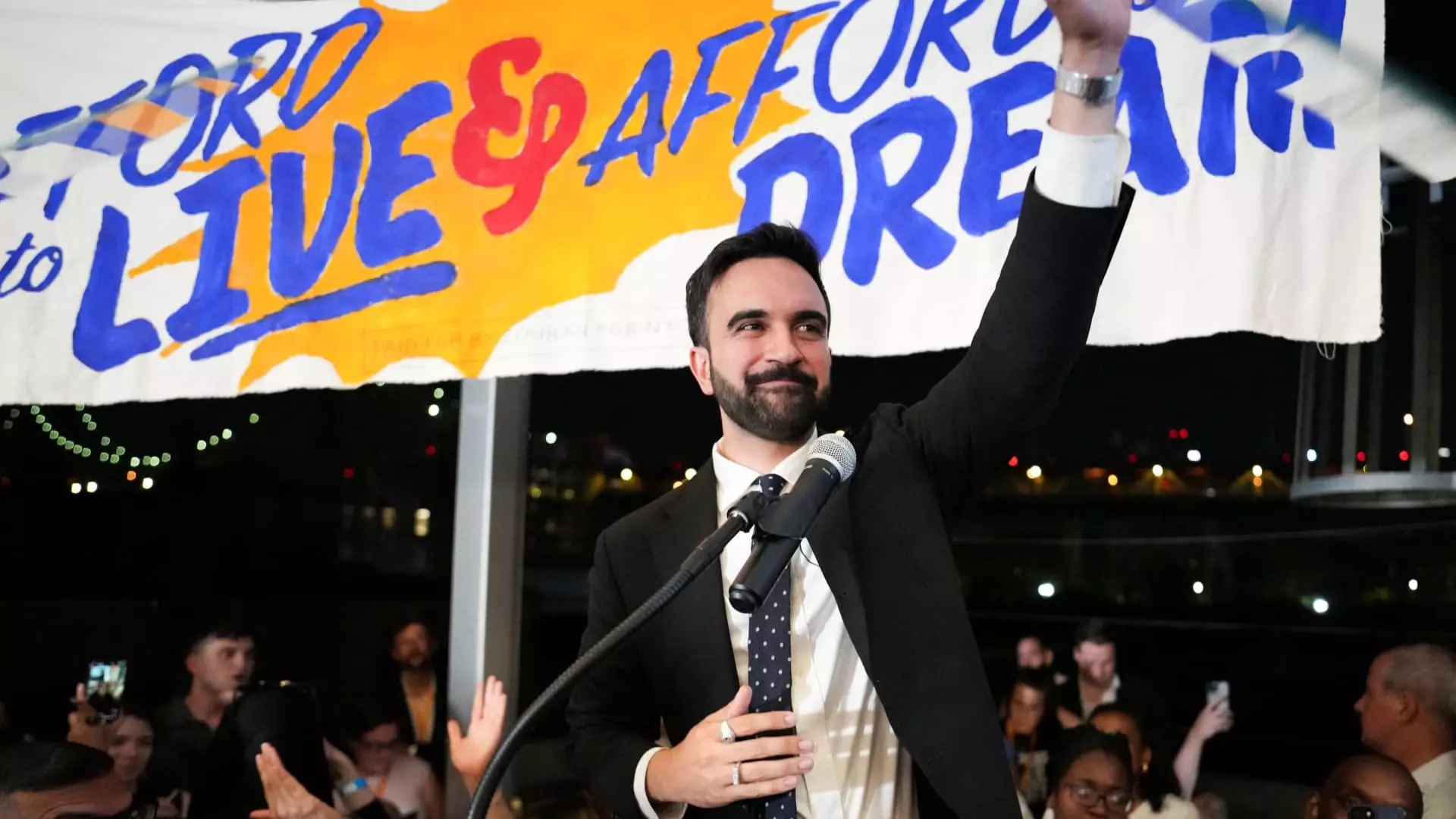In recent political debates, the narrative of New York City suffering from a mass exodus of the rich has gained traction, fueled by provocative election victories and proposed tax hikes. Yet, beneath the sensational headlines lies a complex reality that calls into question whether wealth flight is as dire or irreversible as it is often portrayed. The notion that a single election victory or policy proposal could dismantle the city’s economic fabric oversimplifies a far more resilient and adaptable economic ecosystem.
The proposed “millionaire tax” — an additional 2% on those earning over $1 million — exemplifies this tension. Critics argue that such measures could trigger a “wealth flight,” with the affluent seeking refuge in neighboring states like New Jersey or Connecticut, or even further afield to Florida. However, migration patterns are rarely driven solely by tax rates. Cultural ties, access to world-class services, and lifestyle preferences heavily influence where the wealthy choose to reside. While higher taxes might prompt some to consider relocation, the actual number of high-net-worth individuals permanently abandoning New York remains surprisingly low. Many of those who explore alternatives often end up reaffirming their ties to the city’s unparalleled opportunities.
Furthermore, the city’s deep-pocketed residents benefit from an ecosystem that extends well beyond tax considerations. Luxury real estate, cultural vibrancy, premier healthcare, and educational institutions serve as magnets for the wealthy—not just to live, but to thrive. An overemphasis on tax rates neglects this broader picture of New York’s intrinsic appeal. The idea that a single policy or election result could decimate this ecosystem is a myth that underestimates the strength of New York’s brand as a global financial and cultural hub.
Economic Resilience Defies Simple Narratives
The data tell a different story—one of remarkable resilience in New York’s wealth landscape. Despite the narrative that high taxes will drive away the affluent, the city has continued to generate new millionaires at a consistent pace. Over the past decade, the number of individuals with a net worth exceeding $30 million has nearly doubled, highlighting a thriving environment for ultra-wealthy individuals. This influx suggests that the city’s economic engines—particularly finance, technology, and creative industries—continue to produce wealth faster than it departs.
Concurrently, the real estate market, often seen as an economic barometer, demonstrates persistent strength. Luxury apartment contracts have not only held steady but even increased in volume and value. The market’s ongoing vitality undermines the idea that the city’s wealthy are retreating en masse. Instead, the high-end market seems buoyed by the city’s ongoing status as a symbol of opportunity, luxury, and cultural dynamism.
It is crucial to recognize that affluent residents are mobile, but their movement patterns are nuanced. Many who leave New York for tax reasons tend to relocate to neighboring high-tax states rather than leaving the region entirely. This indicates that lifestyle, family, business needs, and access to services often outweigh tax considerations. The assumption that economic elite flight is fueled solely by marginal tax rates over-simplifies the multifaceted motivations behind migration decisions.
Flaws in the Wealth Flight Fearmongering
The fearmongering surrounding wealth flight often neglects the continued replenishment of New York’s wealth pool. High earners are drawn to the city’s unparalleled cultural offerings, global connectivity, and economic opportunities. The influx of new millionaires, billions in real estate investments, and the constant creation of economic value stand as testament to the city’s enduring magnetism.
Estimates suggest that when high-net-worth individuals do leave, they tend to move within the broader tri-state area or to other high-tax jurisdictions like California or Illinois—not necessarily fleeing to low-tax states. This indicates that tax policy alone is insufficient to cause mass exodus, especially when weighed against the benefits of city life. Furthermore, the claim that the wealthy only care about tax rates underestimates their attachment to the city’s social and economic infrastructure.
It’s also worth noting that recent data show a rebound in millionaire populations after pandemic-induced declines. Despite some out-migration during COVID-19, the city has rapidly recovered, with new wealthy residents pouring in. Such resilience suggests that fears of a permanent decline are exaggerated and overlook the city’s inherent capacity for renewal.
The Crucial Role of Policy and Perspective
From a pragmatic, centrist liberal perspective, it is undeniable that progressive taxation can contribute to a fairer, more equitable society. However, it must be balanced against the potential for unintended economic consequences. Overly aggressive tax policies, especially if perceived as punitive, risk damaging the city’s competitive edge, discouraging new talent, and hindering long-term growth.
Rather than framing the debate as inevitability—either of wealth flight or unshakable prosperity—policymakers should focus on fostering stability, investing in public safety, and creating an environment where wealth can grow sustainably. Policies aimed at reducing inequality should not come at the expense of the city’s economic vitality. A nuanced approach, which aims to improve quality of life for all residents without alienating its wealthiest, is essential.
In practice, the real challenge is crafting a balanced strategy—one that maintains New York’s allure while ensuring that public resources are fairly and effectively allocated. Hoodwinked by sensationalist narratives, some may overlook the complexity of the city’s economic health and the broad benefits of inclusive growth.
Note: This analysis intends to challenge the simplistic narrative of an unstoppable wealth exodus from New York City. Instead, it highlights the city’s extraordinary capacity to adapt, replenish, and thrive—provided policy decisions are guided by realism, fairness, and a recognition of the city’s multifaceted appeal.

